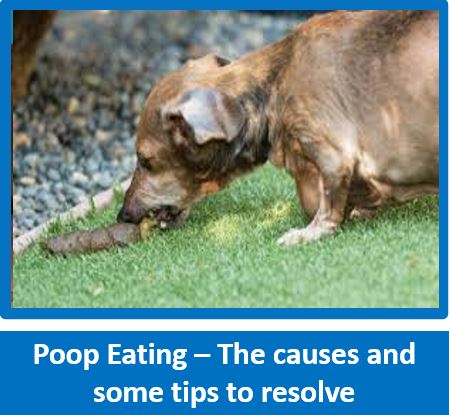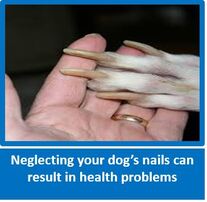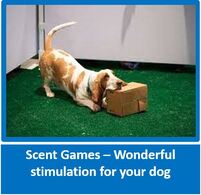
Please visit and FOLLOW our Facebook Page and share with family, friends and on your own Facebook page, and ask them to share further – it is only by working together and sharing knowledge and education that we can improve the lives of dogs and assist owners. We do not inundate you with posts – an average of 5 per week, plus one Tip of the Week, and the odd informative post. Thank You!
Dealing with puppy Tantrums
Scotty Valadao - Canine Behaviourist - Friends of the Dog
....

Many owners think it is rather cute when their pups first offer a temper tantrum when they don’t get their own way, and the most common one I would see in puppy class is when the owner picks the pup up when it is busy playing with the other pups or the play escalates, or we are doing some handling work to prevent future tantrums. Heavens, some of them look like worms, wriggling and struggling to get out of their owners arms.
The very worst thing an owner can do in these circumstances is to give into the puppy. This may be rather hard especially when your adorable little bundle of fluff has started to take the behaviour further and its teeth are firmly embedded in your hand! A puppy tantrum is not funny; it is serious and must be addressed immediately to ensure that it does not happen again.
If the pup is throwing a tantrum, continue holding onto to the puppy as calmly and quietly as possible, holding one hand on the chest and you can even slip a finger through the bottom or the collar - and the other on the back of the collar which may help prevent you being bitten. You can even just hold on with the hand on the chest. If you do already have a tantrum throwing pup, you may find it helpful to kneel on the ground with legs splayed and contain the puppy gently in the gap between your legs. This often helps to prevent nips and it gives you more control and prevents neck and face being nipped. When the pup has settled, even for one or two seconds, then praise the puppy, both verbally and giving a treat, giving the cue ‘settle’, then release the puppy in a happy tone of voice, using the ‘Free’ cue, and tell it to go and play. Only then do you wash your hand and reach for the plasters. While the pup is engaging in the tantrum, the owner does not talk, shout or perform, they stay totally silent and just continue holding on. The message we are giving is that ‘we do not tolerate this behaviour’. If the owner lets the puppy go, the next time the tantrum occurs it is likely to be worse, as is the scenario with children. Rather get it sorted out while the pup is young enough to restrain and the teeth can do minimum damage.
One of the best and easiest ways to overcome this behaviour is to do as much ‘settle’ work as possible in all different situations. The settle exercise is simply to interrupt play sessions on a regular basis. Hold the pup in the above manner and after a few minutes (or even seconds); release the pup with the cue ‘Free’. You don't want to hold the pup for too long - rather short sessions aiming for success rather than a long session and you end up with a tantrum. We are then showing our pups that the fun is not over when we interrupt a game or pick it up, rather that if it settles down quietly for a while, the fun will soon begin again – a bit like play time for children at school –when the bell rings the first time it is play time, and when it rings again, it is time to go back to class. Additionally, as we teach children to sit down quietly and read a book, we are teaching our pups to settle down on a regular basis. This skill will also help a pup to settle quietly in its basket or bed if used enough and be a wonderful tool for self control.
I would even bring the exercise of giving the tantrum throwing pup, hugs and holding as much as possible, for short periods of time, but only after the initial tantrums have stopped - this is an additional step. The tantrum may have resulted initially due to not being able to play, but you may find that this particular pup does not like being hugged either – a very dangerous situation if you realize that young children often run up and hug dogs without even thinking about it! Another factor is that pups will quickly realize that the behaviour of throwing a tantrum worked and will be more likely to add it to its own repertoire! Of course you don’t see dogs hugging in their own environment – but as we as humans tend to engage in this behaviour, it is far better to teach a young pup how to deal with these funny humans it goes to live with! My motto is ‘prevention is better than cure’.
If, after this training, the puppy is still throwing tantrums on a regular basis, I would recommend consulting a qualified behaviour consultant, something is wrong, the puppy wont just ‘grow out of it, as some owners think, further help is required.
The very worst thing an owner can do in these circumstances is to give into the puppy. This may be rather hard especially when your adorable little bundle of fluff has started to take the behaviour further and its teeth are firmly embedded in your hand! A puppy tantrum is not funny; it is serious and must be addressed immediately to ensure that it does not happen again.
If the pup is throwing a tantrum, continue holding onto to the puppy as calmly and quietly as possible, holding one hand on the chest and you can even slip a finger through the bottom or the collar - and the other on the back of the collar which may help prevent you being bitten. You can even just hold on with the hand on the chest. If you do already have a tantrum throwing pup, you may find it helpful to kneel on the ground with legs splayed and contain the puppy gently in the gap between your legs. This often helps to prevent nips and it gives you more control and prevents neck and face being nipped. When the pup has settled, even for one or two seconds, then praise the puppy, both verbally and giving a treat, giving the cue ‘settle’, then release the puppy in a happy tone of voice, using the ‘Free’ cue, and tell it to go and play. Only then do you wash your hand and reach for the plasters. While the pup is engaging in the tantrum, the owner does not talk, shout or perform, they stay totally silent and just continue holding on. The message we are giving is that ‘we do not tolerate this behaviour’. If the owner lets the puppy go, the next time the tantrum occurs it is likely to be worse, as is the scenario with children. Rather get it sorted out while the pup is young enough to restrain and the teeth can do minimum damage.
One of the best and easiest ways to overcome this behaviour is to do as much ‘settle’ work as possible in all different situations. The settle exercise is simply to interrupt play sessions on a regular basis. Hold the pup in the above manner and after a few minutes (or even seconds); release the pup with the cue ‘Free’. You don't want to hold the pup for too long - rather short sessions aiming for success rather than a long session and you end up with a tantrum. We are then showing our pups that the fun is not over when we interrupt a game or pick it up, rather that if it settles down quietly for a while, the fun will soon begin again – a bit like play time for children at school –when the bell rings the first time it is play time, and when it rings again, it is time to go back to class. Additionally, as we teach children to sit down quietly and read a book, we are teaching our pups to settle down on a regular basis. This skill will also help a pup to settle quietly in its basket or bed if used enough and be a wonderful tool for self control.
I would even bring the exercise of giving the tantrum throwing pup, hugs and holding as much as possible, for short periods of time, but only after the initial tantrums have stopped - this is an additional step. The tantrum may have resulted initially due to not being able to play, but you may find that this particular pup does not like being hugged either – a very dangerous situation if you realize that young children often run up and hug dogs without even thinking about it! Another factor is that pups will quickly realize that the behaviour of throwing a tantrum worked and will be more likely to add it to its own repertoire! Of course you don’t see dogs hugging in their own environment – but as we as humans tend to engage in this behaviour, it is far better to teach a young pup how to deal with these funny humans it goes to live with! My motto is ‘prevention is better than cure’.
If, after this training, the puppy is still throwing tantrums on a regular basis, I would recommend consulting a qualified behaviour consultant, something is wrong, the puppy wont just ‘grow out of it, as some owners think, further help is required.




